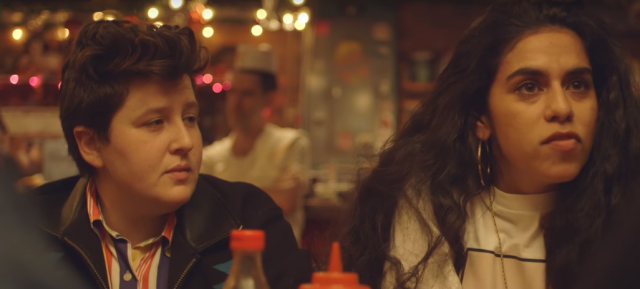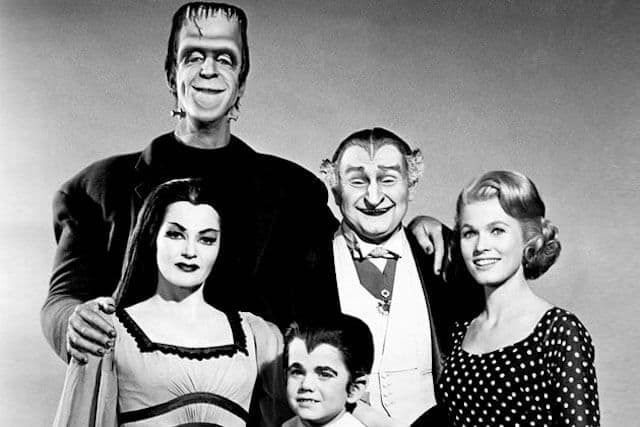

When HBO’s Girls wraps its sixth and final season on Sunday, it’ll leave a cronut-shaped hole in the cultural discourse. The dramedy that launched a thousand think-pieces will surely spawn at least a few more posts of wide-eyed wonderment pondering what the series ultimately says about women, about millennials, about Brooklyn, about cupcake ATMs, and on and on.
As we stare over our own laptop screens into middle-distance asking if these Girls will ever finally become Women, we turned to someone with a bit more perspective on the series.
Alex Karpovsky is an actor (Tiny Furniture) and filmmaker (Rubberneck, Red Flag) best know as the cantankerous Ray Ploshansky on Girls. On a show where every other character appears to be in a contest of who can truly embody “the worst,” Ray’s been a Brokelyn-approved breath of reality and reverence for our fair borough.
We chatted with Ray about his time living in Greenpoint, his favorite way to save money in Brooklyn and the legacy of Girls. Check out his favorite neighborhood haunts and how he’s seen Brooklyn change in our interview below.
You often see Ray described as the moral compass of Girls, what does that mean to you and do you agree?
To some degree I agree. I think when your characters, those four girls, are so flawed and so myopic and so frustrating in many ways, I think you can make an argument that you kind of need someone who’s more righteous and more centered morally, so the audience doesn’t go crazy, so their frustration doesn’t spin into a rage spiral. I think if you can kind of anticipate the audience’s criticisms of principle characters by having another character like me voice that or be more morally centered than they are, I think it really makes the show more watchable. I think it allows a release to happen.
That’s how I interpret his role. But also, I have to say, being the moral compass of a show like this isn’t saying much because these people are so screwed up. It doesn’t take much to be seen as the high road here.
I’d love to hear about your experiences in Brooklyn and what you think it means to the show.
Brooklyn’s central to the show. When we started the show six years ago, Brooklyn, specifically Greenpoint and Williamsburg, where most of these characters live, was a place where you had a little bit of a chance to float around after college before you became a quote-unquote “adult” with a steady job and career trajectory, to kind of make mistakes and mess around and try to find yourself and experiment with different things that give you joy.
When I moved to Brooklyn in ’99, to Greenpoint, it was this beautiful desolate area. I felt I could go into the terror of Manhattan, but also have relief from it when I came home. I needed that for my own mental stability. I’m not one of these guys that could live in Manhattan back then all the time. I needed to, like, ride the dragon and then come back and just be able to chill out. Greenpoint offered that to me. The rents were relatively reasonable. There was no subway there, really. It was affordable to some degree. I could like be a caterer and pretend that I’m a writer or whatever I was doing. That was really a draw for me, and it was a draw for Hannah’s character on the show and other people on the show.
Unfortunately, I think that’s really changed, at least in those specific neighborhoods. And you do need money, and there is much less wiggle room to experiment and play around with your youth, which I think is a bummer. Maybe there are other neighborhoods like Bed-Stuy or Harlem that are making those things possible for younger people, but I know my neighborhood has changed for the worse, from my point of view. It’s one of the many reasons I moved to LA.
Are there places in the neighborhood you like to go back and visit?
I guess there are a few. I used to live right above Pete’s Candy Store, so I like going in there sometimes, but that neighborhood is just full of all these douchebags that I don’t really connect with. Maybe I’m just as judgmental as I was 10 years ago. I’m generalizing aggressively, but I think a lot more people in the neighborhood are just interested in things that are very different than I used to be interested in and am still interested in: creativity, being an artist, experimenting with ideas.
I think that’s been replaced with something that’s more traditional and more financially driven, and ultimately it’s made the neighborhood much more sterile. But, there are places like Bed-Stuy and others, Red Hook, that are vibrant. Maybe it doesn’t matter that much. Maybe you can find your communities outside of your neighborhood. I know in LA, the neighborhood that I live in is really nice. I feel like it’s cheap, relatively speaking, and people can kind of just make mistakes and be forgiven for errors, and not be just completely punished the way this city can be so punishing.
That story of gentrification is something your character confronted head-on. What are some other things the show gets right about Brooklyn?
Because of the density of the place and its history, I think there are people pursuing so many different types of interests in such a small space. They’re just forced to interact with these people and cross paths with them, co-exist with these people. One person might have an artistic bent, another person might be a schoolteacher, another person that is maybe going to school to be a psychotherapist or whatever it is. You’re sharing a subway, you’re sharing a building, so you’re in these proximities where you’re interacting with them in a good and healthy way. That’s the part of New York that I do miss, and I think this show sort of captures that vitality pretty accurately.
Broadly speaking, one of the things that Lena set out to do at the start of the show was to make a group of characters and storylines that were tethered to reality, that were really grounded, raw and gritty, and reflective of people you really might see in Williamsburg or Greenpoint. I think that’s still true of the show today. I think they got that right.
When I say that, I’d just like to add, making people realistic, including all of their flaws and shortcomings, I think that’s very important. I don’t think you can make a show that’s realistic and grounded without including how myopic people can be, and how cowardly they can be. These people at the start of our show anyway, these four girls, they’re really flawed characters. That was important for Lena to showcase. They live in their own little bubbles and they have a lot of fears and judgments. And that’s one of the reasons why they don’t have friends as diversified as they could have been. I think more mature people would have a wider group of friends to draw from.

That sort of alludes to one of the biggest criticisms the show faced: a lack of diversity and representation. But, overall, that’s just one of many points that people have dissected. In a way, Girls spawned the think-piece industry with a lot of focus on Lena, professionally and personally. As someone who’s worked with Lena for so long, what’s something about Lena Dunham that you think some people still don’t know?
What I’m most surprised by, and maybe other people are as well: She hasn’t changed fundamentally who she is. I think most people when they’re 24 years old, if they’re given the keys to this car, this big, shiny, muscular Cadillac, their heads would explode. Their vices would take over or their arrogance or whatever. That never happened with Lena. I think it’s a real testament to her grace and her maturity and the fact she knew who she was at such an early age. She’s still sort of the same self-deprecating goofball that I remember from Tiny Furniture, and I think that might surprise some people. She’s very easy to talk to.
Ten years from now, how do you want Girls to be remembered?
I would like to think we were woven into some sort of socio-cultural discourse with our time. As you said, we may have been one of the catalysts for the think-piece community. I’d like to grandiosely think that might be possible. When we worked on Tiny Furniture, it was such a small movie. When I learned initially that Lena had the chance of basically carrying on a similar sensibility to a mainstream platform, I was very excited, but also very skeptical. I didn’t think this raw, gritty, personal, weird vibe would translate. So, looking back ten years from now, I’m really proud that she found a way to translate this “indie”, quote-unquote, sensibility to a mainstream audience. I didn’t think that was possible, but she did it. She did it because her stories are very funny, they’re very universal, and they’re just very, very specific, and people attach themselves to that.
Do you have a favorite Brooklyn hack for living on the cheap?
I make my own projects, movies, and back [when I was living in Greenpoint], I was doing that and I had no money. And making a movie costs money. So one thing that I would do often is go to Best Buy, buy a camera, buy a microphone, buy monitors, and they have a very generous return policy — I think it’s 90 days and don’t break it and come back with the receipt type of thing. I don’t know if it’s still there, but there was Best Buy in Union Square, and I would go there often and haul up, shoot my movie and then return my stuff. Never had a problem. They were all very cool. So, basically it was like a free rental house that you don’t need insurance for, so that was something I would exploit a lot.
The final episode of Girls airs Sunday at 10pm on HBO.
Leave a Reply



